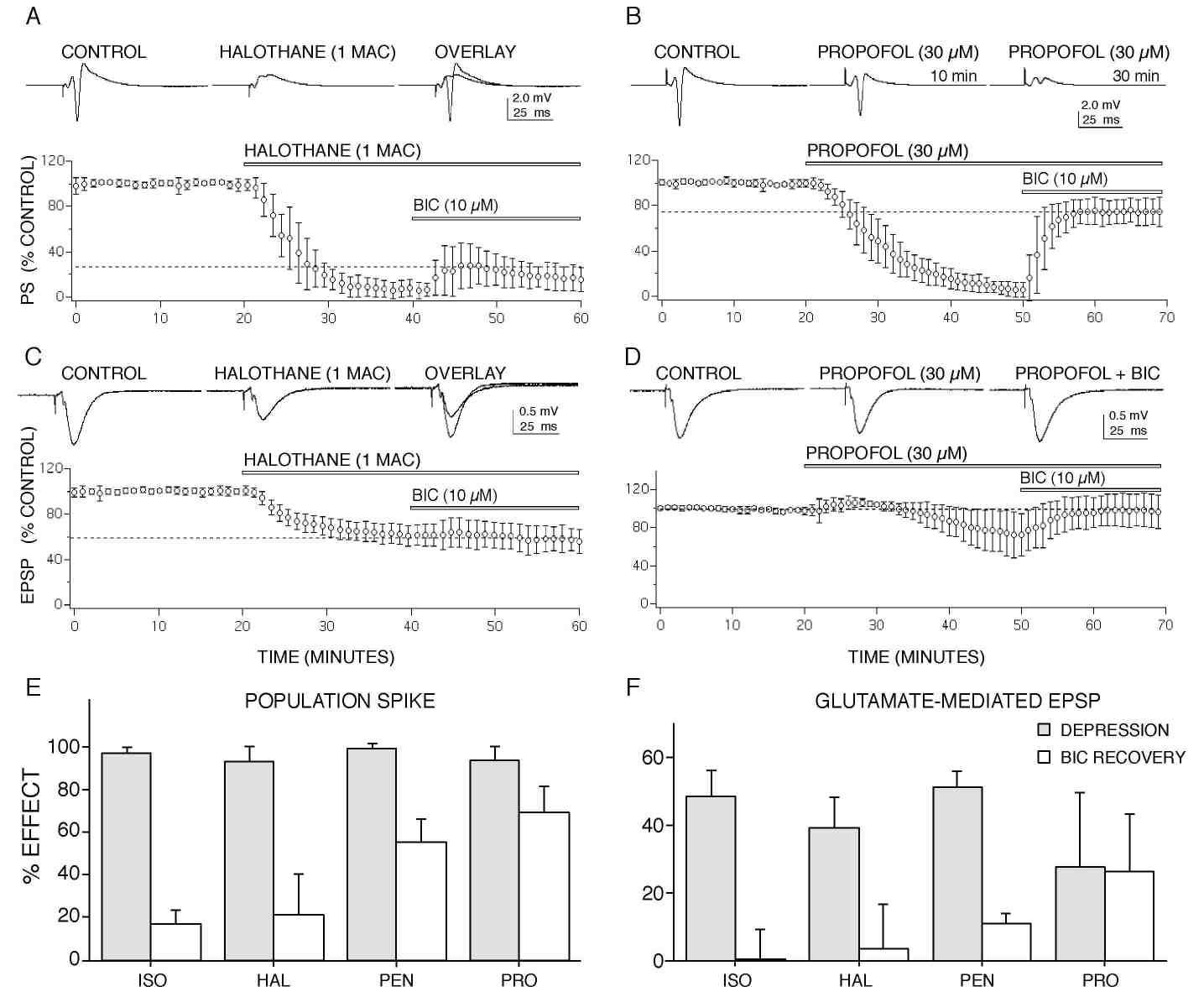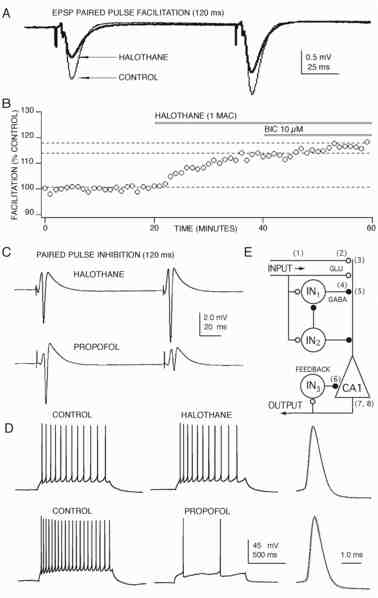
Glutamate is the major
excitatory neurotransmitter used by the mammalian CNS, and is especially
important in higher brain structures such as the neocortex and hippocampus.
Halothane, like other anesthetics,
depressed CA1 neuron discharge (Fig A) and reduced glutamate-mediated
excitatory postsynaptic potentials (EPSPs Fig C). This depression was independent
of effects on GABA-mediated inhibition, since the effect persisted in the
presence of an excess concentration of the GABA antagonist bicuculline (BIC
in Fig C). Propofol, in contrast, required BIC-sensitive GABA-mediated
inhibition for much of it's effect. Abused inhalants, like toluene,
produced a different profile of effects compared to inhaled anesthetics,
but appear to share some of the same sites of action at glutamate and GABA
synapses. Even among inhaled anesthetics, agent specific effects were
evident, for example, halothane and isoflurane both depress glutamate-mediated
synaptic transmission by depressing glutamate release from synaptic terminals,
but some of halothane's
depression involves partial sodium channel blockade, not produced by isoflurane.

Recordings
on top show the halothane & propofol -induced depression of population
spike & EPSP responses from hippocampal CA 1 neurons in a brain slice.
Note that halothane produced a 50 % EPSP depression which was not reversed
by bicuculline (BIC , above Fig A).
Depression
of EPSP responses occurred with an increase in paired pulse facilitation
(below, Fig A), indicating a presynaptic site of action; a halothane-induced
decrease in glutamate
release. Propofol, in contrast, produced an EPSP depression that
was completely reversed with a GABA antagonist, bicuclline (BIC), indicating
that this anesthetic increases
GABA-mediated inhibition to depress the CA1 circuit.

Propofol and halothane produced
strikingly different effects on CA1 neuron action potential discharge.
Halothane had no obvious effect (D Figure bottom), but propofol produced
a strong depression of discharge. Each class of anesthetic, from volatile
agents like halothane and IV drugs like propofol, produce a unique profile
of effects by acting at multiple sites and with differing degrees of effects
at these sites. See Pittson
et al 2004 for more details. The same pharmacologic selectivity
appears to be true for abused
inhalants and other classes of CNS active drugs. This selectivity
may account for differing effects on memory, cognition and pain systems produced
by each class of drug. Understanding these drug mechanisms will help
create better therapeutics with fewer unwanted side effects.